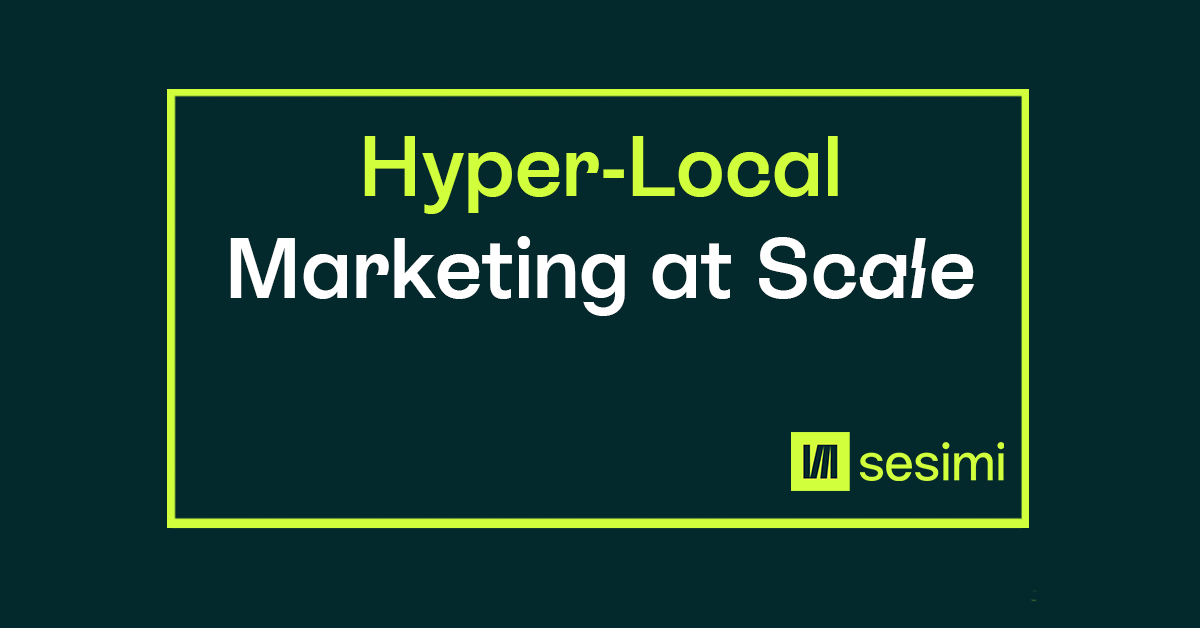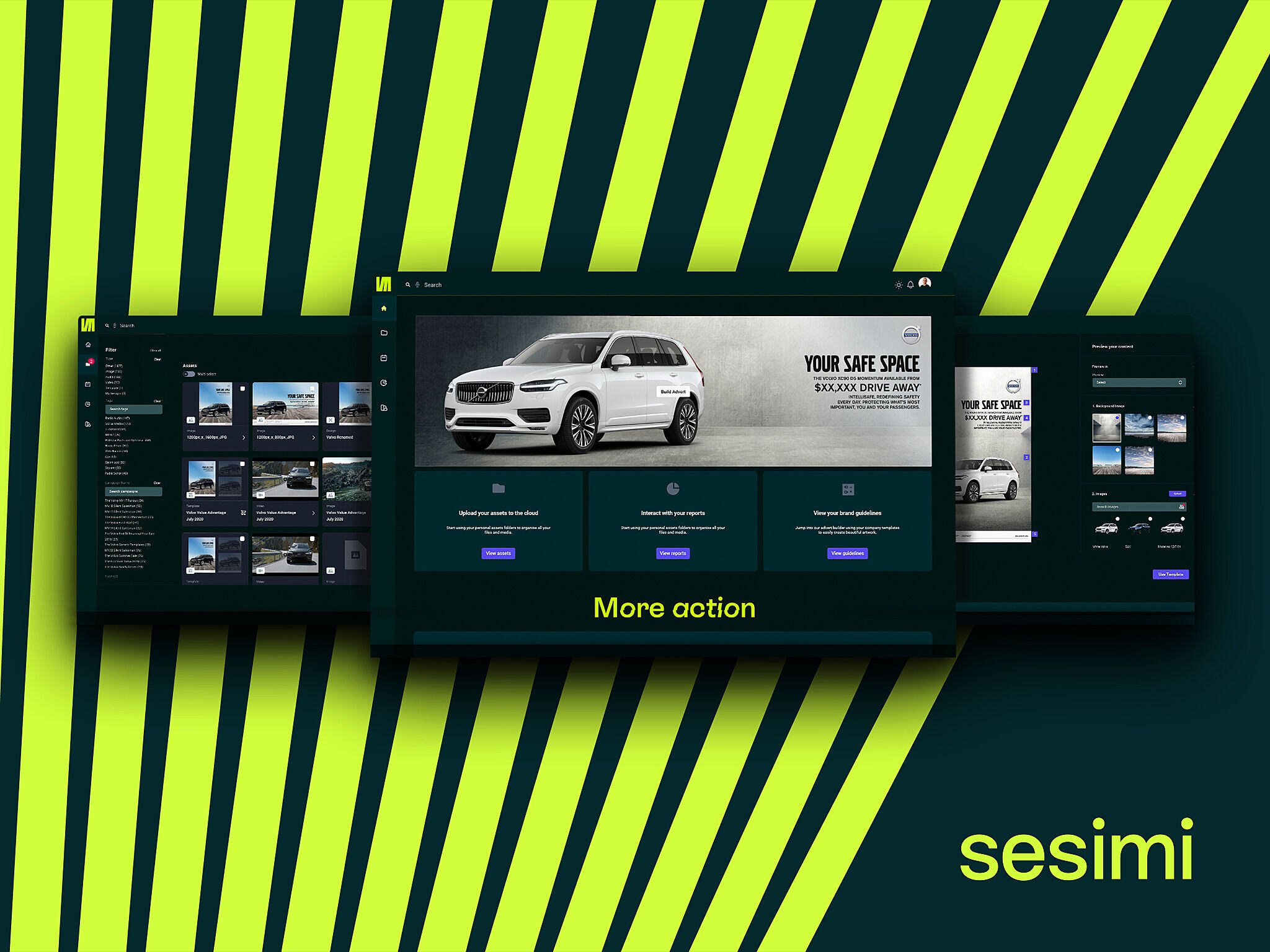Inside Sesimi - Latest News and Stories
Stay up to date with the latest news and insights from the Sesimi team.
How to Choose a Creative Automation Platform
Published on 6 May 2025 by Sesimi Editorial

The right creative automation platform doesn’t just help you build more content. It helps your entire brand ecosystem work smarter, aligning creative and strategic teams around a consistent, scalable workflow.
With so many options out there, how do you choose the platform that fits your business?
There are key questions you can ask, features that matter, and real-world outcomes that the best platforms deliver. Whether you’re exploring solutions for the first time or reassessing your current tech stack, this guide is built to help you make an informed decision when choosing your Creative Automation platform.
What is a Creative Automation Platform?
A creative automation platform, at its simplest, helps brands achieve two things;
- Produce marketing content faster
- Create marketing collateral at scale
A great creative automation platform though, does both of these things, while maintaining brand consistency without the user needing to worry about it.
The platform does this by turning approved creative assets like logos, layouts, and messaging into versatile, editable templates. Think of it like approved building blocks, being applied strategically to build foundations quickly.
Key benefits at a glance:
- Speed-to-market: Launch campaigns faster without design bottlenecks.
- Brand Control: Templates ensure assets stay on-brand, everywhere without worry.
- Cost Efficiency: Reduce production costs by repurposing approved content.
- Project Scalability: Support distrubuted teams with easy-to-use tools and in-built collaboration.
- Marketing Consistency: Align messaging, voice, and style across formats, platforms, and regions.
1. Who will be using your platform?
This is the first question to ask when choosing a Creative Automation Platform. Start with your users. Are you empowering in-house marketing teams? Local franchisees? Sales reps? Or third party partners?
Understanding who will be creating and approving your content helps shape your wish-list features. For example:
- Head Office Marketers need powerful template control and campaign coordination tools.
- Local teams need simplicity, flexibility, and clear guidelines to work within.
- Agencies and external partners require controlled access, approval workflows, and performance tracking.
2. What kind of content do you need to produce?
Not all platforms are built for every format. Make sure your chosen platform supports and excels with the types of content that matter most to your business.
- Static ads
- Video templates
- Social media graphics
- Point of Sale Collateral
- eDM and email assets
- Digital and print variations
If you operate across multiple regions you’ll want multi-language support and the ability to adapt content for local offers and events too.
3. How much control do you need over branding?
The most stategic platforms do something very tricky. They walk a tightrope, allowing users a high degree of creative flexibility, while adhering to controlled brand guardrails.
To identify one of these platforms look for:
- Lockable templates that prevent off-brand edits.
- Brand kits for colour, font, logos, and messaging guidelines
- Real-time previews for local teams
- Automated checks to flag errors before content goes live.
This checklist of features helps ensure every asset that goes to market reflect your brand without require manual, unreliable oversight.
4. How well does it integrate with your existing toolkit?
Content doesn’t live in a vacuum. Your creative automation platform should integrate with your wider marketing ecosystem.
Look for platforms that support connections to tools like:
- Digital Asset Management (DAM) systems for asset sourcing and centralised control.
- Marketing Planing Systems for coordianting national and local campaigns.
- Fund Management tools to allocate, track, and optimise budge usage.
If your creative automation platform already connects with these types of tools, you’re better positioned to streamline workflows, reduce duplication, and empower teams to work faster and smarter all without compromising control.
5. Can it grow with you?
Scalability isn’t just about headcount. It’s about adaptability. As your brand, team, and network grow, your Creative Automation Platform should:
- Support more users, teams, and territories
- Offer usage based pricing or enterprise plans
- Enable advanced permission sutrctures and role-based access
- Provide audit trails, historical asset revisioning, and performance insights.
Look for a provider with proven experience supporting brands at scale and a clear product roadmap that shows they’re investing in innovation.
Final Thoughts
Don’t just buy a tool, choose a partner.
The best Creative Automation Platforms don’t just provide technology. They deliver pathways to outcomes. Look for a partner who understands your business model, supports your onboarding and rollout, and offers a track record of ongoing success with similar brands.
With the right platform, your team doesn’t just create content. They build campaigns faster, stay aligned, and grow alongside your business with confidence.

Read other relevant blog posts:
 Hyper-Local Marketing at ScaleLearn how leading multi-unit brands use creative automation to empower local teams while maintaining brand consistency and compliance. Discover scalable hyper-local marketing with Sesimi.
Hyper-Local Marketing at ScaleLearn how leading multi-unit brands use creative automation to empower local teams while maintaining brand consistency and compliance. Discover scalable hyper-local marketing with Sesimi.5 Nov 2025 • Sesimi Editorial
 What is Digital Asset Management? Everything You Need to KnowLearn what Digital Asset Management is, how it works, and why it is essential for brand consistency. Discover the benefits and key steps to get started.
What is Digital Asset Management? Everything You Need to KnowLearn what Digital Asset Management is, how it works, and why it is essential for brand consistency. Discover the benefits and key steps to get started.29 Sept 2025 • Sesimi Editorial
 What Is Brand Compliance? Definition, Examples, and Tools.Learn what brand compliance is, see examples, and use a simple process to enforce guidelines across teams with automation.
What Is Brand Compliance? Definition, Examples, and Tools.Learn what brand compliance is, see examples, and use a simple process to enforce guidelines across teams with automation.3 Aug 2025 • Sesimi Editorial
